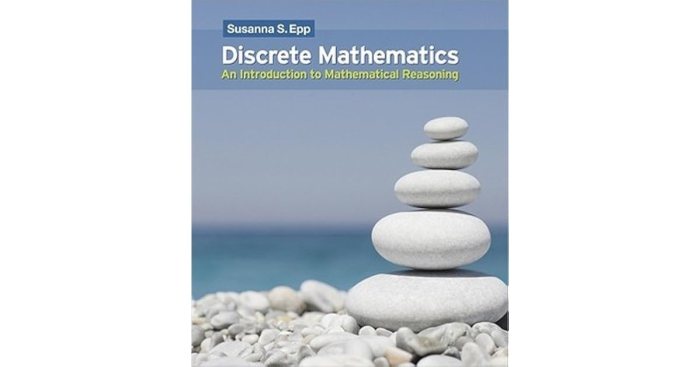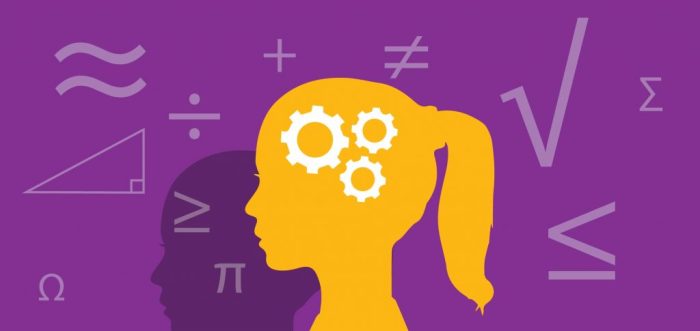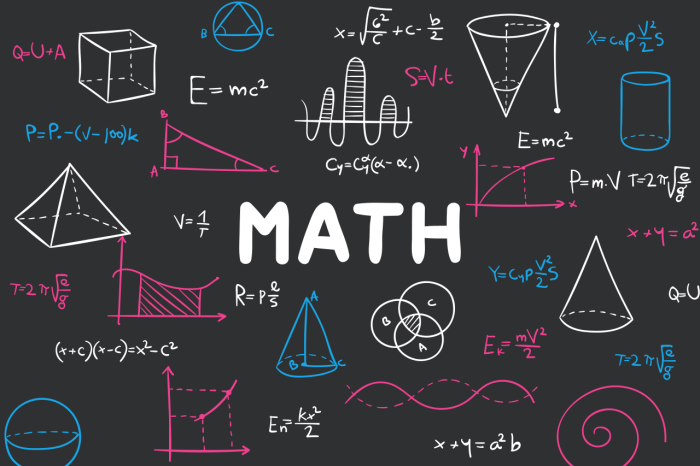Discrete mathematics an introduction to mathematical reasoning answers – Discrete Mathematics: An Introduction to Mathematical Reasoning Answers unveils the fundamental concepts of discrete mathematics, empowering readers with the tools to navigate the complexities of logical reasoning. This comprehensive guide provides a solid foundation for understanding the principles and applications of discrete structures, equipping readers with the knowledge to excel in various fields.
Delving into the realm of logic and proofs, the text elucidates propositional and predicate logic, exploring different proof techniques and highlighting common fallacies. Set theory unveils the concepts of sets and their operations, cardinality, and countability, laying the groundwork for understanding more advanced mathematical concepts.
1. Introduction to Discrete Mathematics

Discrete mathematics deals with the study of objects that can be counted or separated into distinct units. It provides a foundation for understanding various structures and relationships in computer science, mathematics, and other fields.
Examples of discrete structures include sets, relations, functions, graphs, and numbers. Discrete mathematics has applications in areas such as computer science, cryptography, operations research, and social sciences.
2. Logic and Proofs
Logic provides a framework for reasoning and constructing valid arguments. Propositional logic deals with statements that can be true or false, while predicate logic allows for more complex statements involving variables and quantifiers.
Proof techniques include direct proof, indirect proof, and proof by contradiction. Direct proof involves showing that the conclusion follows logically from the premises. Indirect proof assumes the negation of the conclusion and derives a contradiction, leading to the conclusion. Proof by contradiction is a special case of indirect proof where the contradiction is derived from the premises alone.
3. Set Theory
Set theory studies collections of distinct objects. Sets are defined by their elements, and operations on sets include union, intersection, difference, and complement.
Cardinality refers to the number of elements in a set. Countability means that a set has either a finite number of elements or can be put into a one-to-one correspondence with the natural numbers.
4. Relations and Functions
Relations are mappings between sets, while functions are relations that assign a unique element in the second set to each element in the first set.
Different types of relations and functions include one-to-one, onto, and bijective. One-to-one functions preserve distinctness, onto functions map every element in the second set, and bijective functions are both one-to-one and onto.
5. Number Theory, Discrete mathematics an introduction to mathematical reasoning answers
Number theory explores the properties of numbers, particularly integers. Prime numbers, divisibility, and modular arithmetic are fundamental concepts in number theory.
Number theory algorithms include the Euclidean algorithm for finding greatest common divisors and Fermat’s Little Theorem for solving modular equations.
6. Graph Theory
Graph theory studies graphs, which are structures consisting of vertices and edges connecting them. Different types of graphs include directed graphs, undirected graphs, and weighted graphs.
Graph theory concepts include connectivity, Eulerian and Hamiltonian paths, and graph coloring. Connectivity refers to the existence of paths between vertices, while Eulerian and Hamiltonian paths are special types of paths that visit all vertices.
FAQ Compilation: Discrete Mathematics An Introduction To Mathematical Reasoning Answers
What is the significance of discrete mathematics in computer science?
Discrete mathematics provides the foundation for understanding the theoretical underpinnings of computer science, including data structures, algorithms, and cryptography.
How does discrete mathematics contribute to problem-solving?
Discrete mathematics equips individuals with logical reasoning skills and techniques, enabling them to analyze and solve problems systematically and efficiently.
What are the key applications of discrete mathematics in real-world scenarios?
Discrete mathematics finds applications in diverse fields such as network optimization, cryptography, coding theory, and financial modeling.


